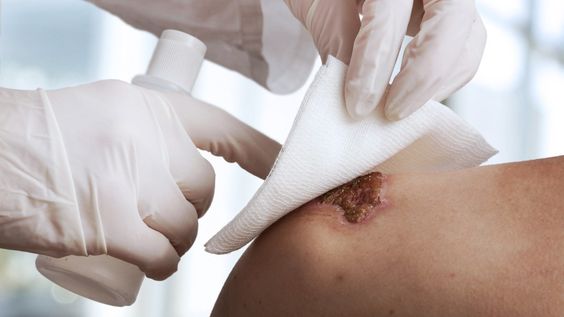Wound healing is a very complex process, and biofilm also has a huge impact on wound healing. The wound healing process usually goes through four stages: hemostasis, inflammation, proliferation, and remodeling. However, chronic wounds can result when wounds fail to progress through the normal healing phases. With the aging of the social population, chronic wounds are also showing an aging trend and the number is increasing. The prolonged healing of chronic wounds not only harms the patient's body and mind but also brings medical and economic burdens to society. According to statistics, the widespread presence of bacterial biofilms in chronic wounds is an important factor causing delayed wound healing. Therefore, it is of great significance to understand biofilm, master its clinical characteristics, and implement targeted wound management to promote chronic wound healing.
What is a biofilm?
Biofilms are complex, dynamic microbial communities of bacteria and fungi that form when certain types of microorganisms accumulate and attach to wound surfaces. Assemblies of bacteria resistant to therapy and host defense. The formation mechanism of biofilm is complex, involving the complex and dynamic interaction among wound surface, microbes, and EPS, which makes it show remarkable resistance to antibiotics and host immune response, and also delays wound healing time and infection risk.
How to recognize bacterial biofilm early?
In the initial stage of biofilm formation, bacteria will form small colonies with other microorganisms and attach to the surface of the wound. This is not obvious, and it can usually be resolved by normal cleaning and debridement of the wound. In the middle stage of biofilm formation, because the wound is attacked by other microorganisms and bacteria, they form a solid layer of the colony on the surface of the wound, which is more obvious at this time, usually a yellow, sticky layer of material attached to the wound. This requires the use of functional wound dressings for treatment. In the late stage of biofilm formation, when the wound appears as slough, generally yellow, viscous, soft, and opaque gelatinous substance attached to the wound, it is necessary to use sharp instruments to debride the wound thoroughly, plus use autolytic debridement dressing.
Biofilm Management and Treatment
Currently, the most effective method of managing and treating biofilm-infected wounds is cleansing and debridement.
Wound debridement:
It is a nursing technique performed by a surgeon using a sharp instrument to remove carrion, devitalized and necrotic tissue, bacterial biofilm, etc. to improve or promote wound healing. Common debridement methods are mechanical debridement, sharps/surgical debridement, autolytic debridement, and enzymatic debridement. Debridement turns chronic wounds into acute wounds and accelerates their healing. Although bacterial biofilms cannot be completely removed, immature biofilms within 24 hours of debridement are more sensitive to topical antibacterial agents than biofilms that mature within 24 hours.
Wound cleaning:
After debridement, the wound should be properly cleaned, and the wound surface should be cleaned with isotonic saline. Debridement is a critical step in the removal of necrotic, devitalized tissue and microorganisms from the wound surface. Antimicrobials become more effective when biofilms are disrupted and removed. Applying antiseptics to wounds helps prevent biofilm reformation and kills microbial cells.
Use of wound dressings:
Dressing selection should be based on standard clinical parameters rather than silver content or release activity of the dressing.
Silver Ion Dressing: silver-containing dressings are currently considered to have broad-spectrum antimicrobial effects; dressings containing silver ions (5–10 mg/L) can remove about 90% of wound biofilm within 24 hours, and can be completely removed within 48 hours; these Antimicrobials help kill bacteria and other microorganisms and prevent biofilm reformation. Topical antiseptics can also be used in combination to help reduce the risk of recontamination.
Increase the frequency of debridement and cleaning:
Biofilms can re-form within 24 hours of debridement and cleaning. Regular debridement and cleaning of the wound are therefore very important. The frequency of debridement and cleaning should be increased when biofilm reformation on a wound is suspected.
Surgical debridement plays a vital role in biofilms, which pose a challenge to chronic wound healing, but supplementation and enhancement with targeted dressings are also important measures.
For more information on Innomed® Silver Ion Dressing, refer to the previous articles. If you have customized needs, you are welcome to contact us; we will serve you wholeheartedly. At Longterm Medical, we transform this data by innovating and developing products that make life easier for those who need loving care.
Editor: kiki Jia
Date: February 22, 2023

 English
English عربى
عربى Español
Español русский
русский 中文简体
中文简体








